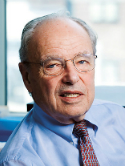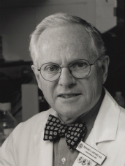The histone deacetylase inhibitor suberoylanilide hydroxamic acid induces differentiation of human breast cancer cells Journal Article
| Authors: | Munster, P. N.; Troso-Sandoval, T.; Rosen, N.; Rifkind, R.; Marks, P. A.; Richon, V. M. |
| Article Title: | The histone deacetylase inhibitor suberoylanilide hydroxamic acid induces differentiation of human breast cancer cells |
| Abstract: | Histone deacetylase (HDACs) regulate histone acetylation by catalyzing the removal of acetyl groups on the NH2-terminal lysine residues of the core nucleosomal histones. Modulation of the acetylation status of core histories is involved in the regulation of the transcriptional activity of certain genes. HDAC activity is generally associated with transcriptional repression. Aberrant recruitment of HDAC activity has been associated with the development of certain human cancers. We have developed a class of HDAC inhibitors, such as suberoylanilide hydroxamic acid (SAHA), that were initially identified based on their ability to induce differentiation of cultured murine erythroleukemia cells. Additional studies have demonstrated that SAHA inhibits the growth of tumors in rodents. In this study we have examined the effects of SAHA on MCF-7 human breast cancer cells. We found that SAHA causes the inhibition of proliferation, accumulation of cells in a dose-dependent manner in G(1) then G(2)-M phase of the cell cycle, and induction of milk fat globule protein, milk fat membrane globule protein, and lipid droplets. Growth inhibition was associated with morphological changes including the flattening and enlargement of the cytoplasm, and a decrease in the nuclear: cytoplasmic ratio. Withdrawal of SAHA led to reentry of cells into the cell cycle and reversal to a less differentiated phenotype. SAHA induced differentiation in the estrogen receptor-negative cell line SKBr-3 and the retinoblastoma-negative cell line MDA-468. We propose that SAHA has profound antiproliferative activity by causing these cells to undergo cell cycle arrest and differentiation that is dependent on the presence of SAHA. SAHA, and other HDAC inhibitors are currently in Phase I clinical trials. These findings may impact the clinical use of these drugs. |
| Keywords: | phosphorylation; receptor; retinoblastoma protein; carcinoma cells; gene-expression; induction; sodium-butyrate; mcf-7; cellular-differentiation; hyperacetylation |
| Journal Title: | Cancer Research |
| Volume: | 61 |
| Issue: | 23 |
| ISSN: | 0008-5472 |
| Publisher: | American Association for Cancer Research |
| Date Published: | 2001-12-01 |
| Start Page: | 8492 |
| End Page: | 8497 |
| Language: | English |
| ACCESSION: | WOS:000172594600027 |
| PROVIDER: | wos |
| PUBMED: | 11731433 |
| Notes: | Article -- Source: Wos |
Citation Impact
Related MSK Work







